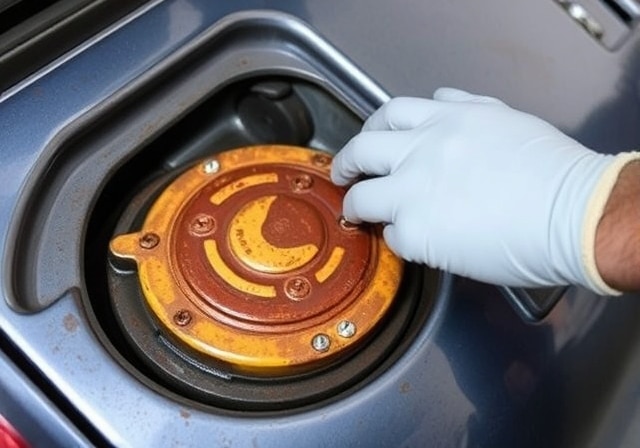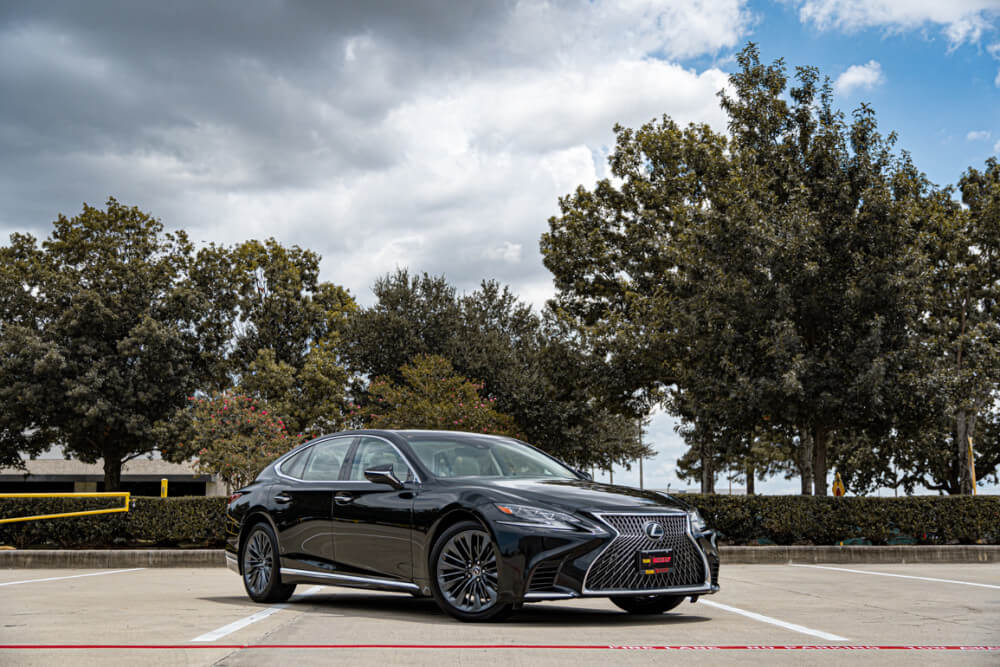The rust of the car, particularly in the car fuel tank, is one issue that you will avoid if you plan to make your vehicle’s engine last long. Rusting debris may block fuel lines, damage the fuel pump, or even harm your car engine. Conveniently, cleaning a rusty fuel tank can be performed at home if you have all the necessary equipment and patience. Below is a straightforward guide using vinegar, which most people have at home, to assist you in removing rust from your gas tank.

How to Remove Rust from a Fuel Tank Step-by-Step.
Step 1: Take Out the Fuel Tank.
After you have ensured you have done this by safely removing the fuel tank from your car, park the car in an open place with air. Drive your car away for some distance and then return. Before you can begin cleaning the car, you need to disconnect the fuel lines, battery, as well as other connections to the tank, and drain any remaining fuel.
Step 2: Inspect the Tank.
Once you lift out the tank, inspect inside it with a flashlight. You will decide the extent of cleaning it needs.
Step 3: Prepare Cleaning Solution (Vinegar and Baking Soda).
It is also a natural rust remover. Put half of the white vinegar in the tank. If you want an effect that will be well pronounced, then you might add a few tablespoons of baking soda as this reacts with vinegar to cause an effervescent action that would probably dislodge the rust.
Step 4: Shake the Tank.
Seal the tank openings with rubber plugs or duct tape. Shake the tank vigorously in all directions for 5 to 10 minutes, allowing the liquid to slash around and break off rust. If you like, toss a handful of nuts, bolts or small rocks inside to knock rust particles off as you shake.
Step 5: Let it Sit.
Let the vinegar solution remain in the tank for 24-48 hours depending on how much rust there is. This acid will eventually break down the rust.
Step 6: Rinse the Tank.
After soaking, drain out the vinegar along with the rust. Rinse the tank multiple times with water to remove all that loose rust and vinegar.
Step 7: Neutralize the Acid.
Pour in the water damped by baking soda to neutralize the acidity of vinegar so as not to rust it anytime soon, swish it for a few minutes then drain.
Step 8: Dry the Tank.
Ensure that the inside surface of the tank is dry with a hairdryer or compressed air. In case some moisture is retained, there is a chance that rust will come back.
Step 9: Reinstall the Tank.
With the tank now clean and dry, change the tank in your car. Ensure that you reconnect all the components like fuel lines, pump, and battery
Refuel the Tank.
Fill up with fresh, clean fuel, but prepare with a stabilizer as this will keep the system cleaned out and prevent further rust accumulation in the tank
Why Clean a Rusty Fuel Tank?
Cleaning the rust off your fuel tank is important to keep your car going. Rust particles can accumulate in your fuel injectors and short-circuit your fuel pump, which can result in bad fuel economy. Maintaining your fuel system avoids creating problems that can reduce the life of your engine and ensures safe driving.
Tools and Supplies Needed.
| Item | Purpose |
| White Vinegar | Dissolves rust inside the fuel tank |
| Baking Soda | Enhances the cleaning effect and neutralizes acid |
| Rubber Plugs/Duct Tape | Seals the tank while shaking |
| Nuts/Bolts/Small Rocks | Loosens rust during shaking |
| Hairdryer/Compressed Air | Dries the inside of the tank completely |
| Fuel Stabilizer | Prevents future rust formation |
FAQs.
Q1: Are there any other chemicals that I can apply to my fuel tank to remove rust?
A: While vinegar is a natural, risk-free cleaning agent, there are commercial rust removers that focus on automotive applications. These are generally much more expensive and may require greater safety precautions.
Q2 How often should a fuel tank be cleaned?
A: Cleaning the fuel tank is not part of the scheduled maintenance list, but if your vehicle is old, or you store it for long periods, looking for rust and cleaning it when necessary is good practice.
Q3: Can I prevent rust from forming inside my fuel tank?
A: Yes. One way is to keep your tank full of fuel with a stabilizer added. Also, let’s try not to let the tank go dry for extended periods. Condensation causes rust.
Q4: Do you have to pull the gas tank off to clean the rust?
A: If you do pull the gas tank off, it makes it much easier to give a good rinse. On the other hand, there are in-tank cleaning products. You can clean from the inside if pulling the tank out isn’t feasible, but they may not be strong enough for heavy rust.
Where to Buy? Team Extreme Rentals.
Are you looking for a good quality vehicle or need some professional advice about the care of your car? Look no further than Team Extreme Rentals! We have a whole inventory of luxury cars, SUVs, and sedans for you. Our cars are well-maintained to give you that much-needed drive experience.
Visit us in our showroom today!
Contact No: +1 (903) 827-4466
Email: [email protected]
Showroom Address: 15222 John F Kennedy BLVD, Houston, TX 77032
Follow us on social media:



